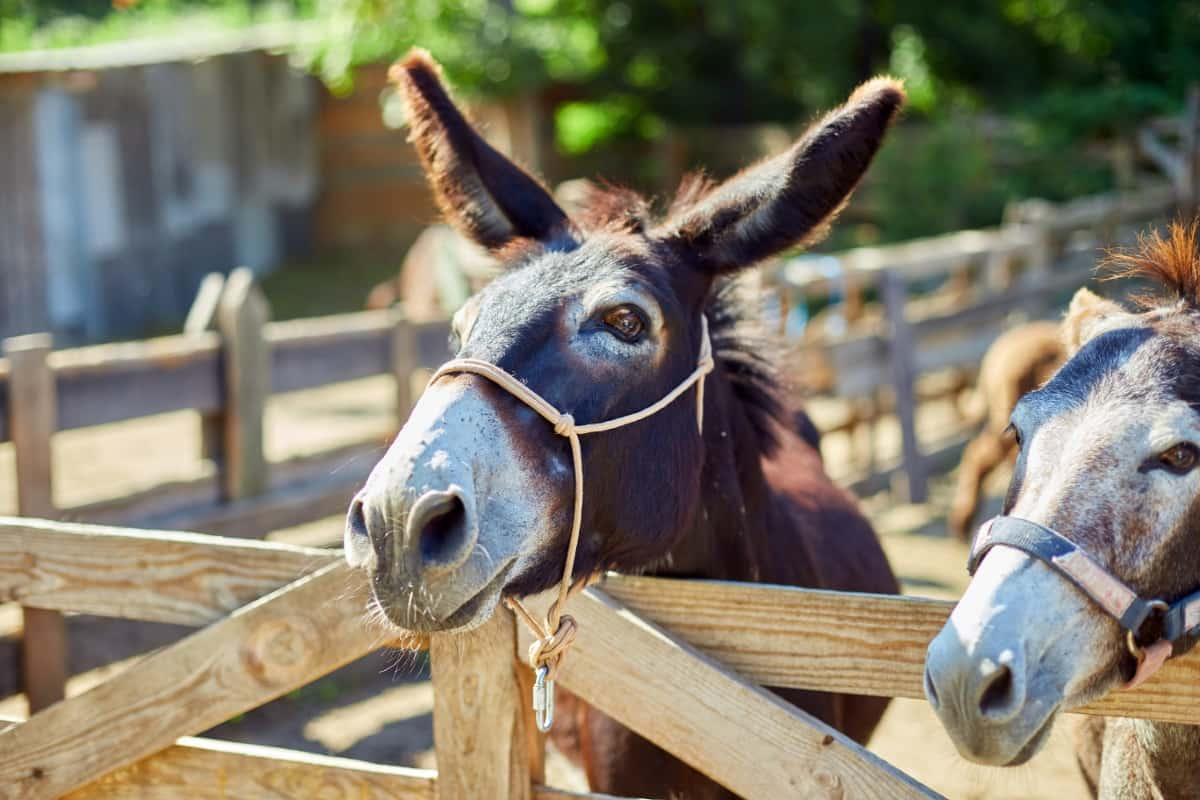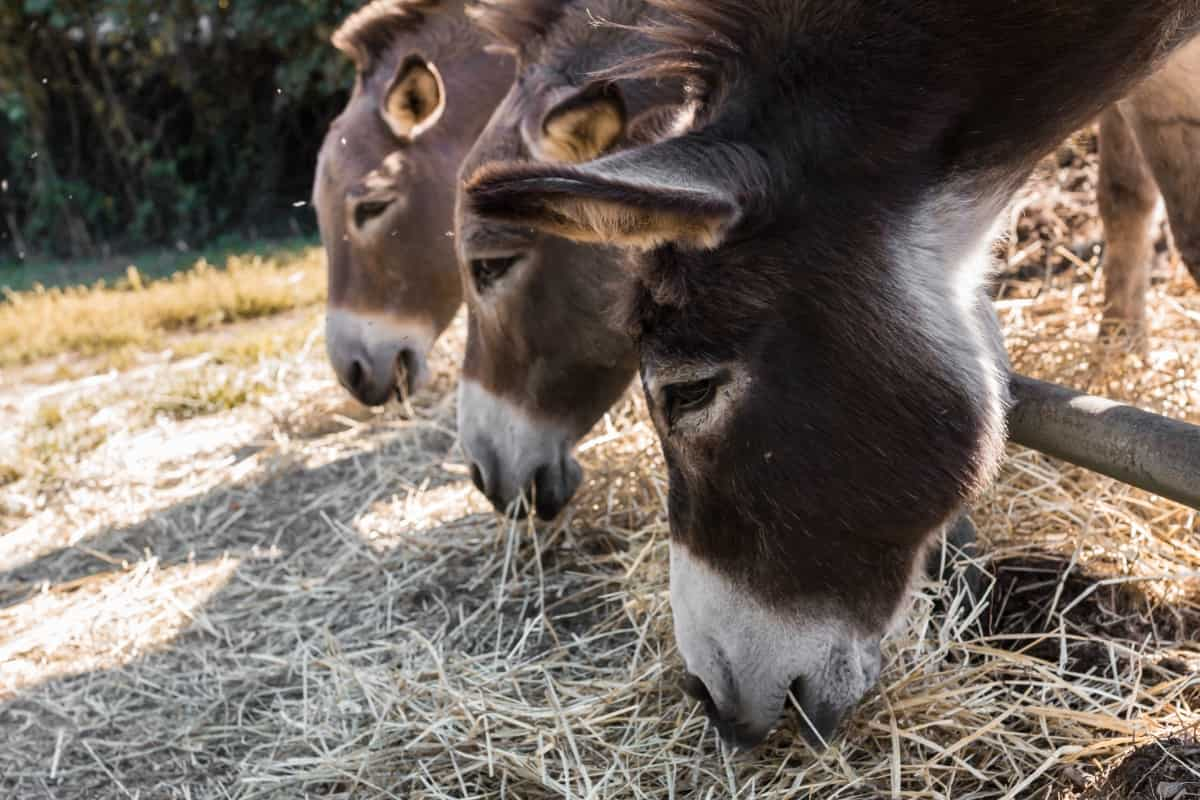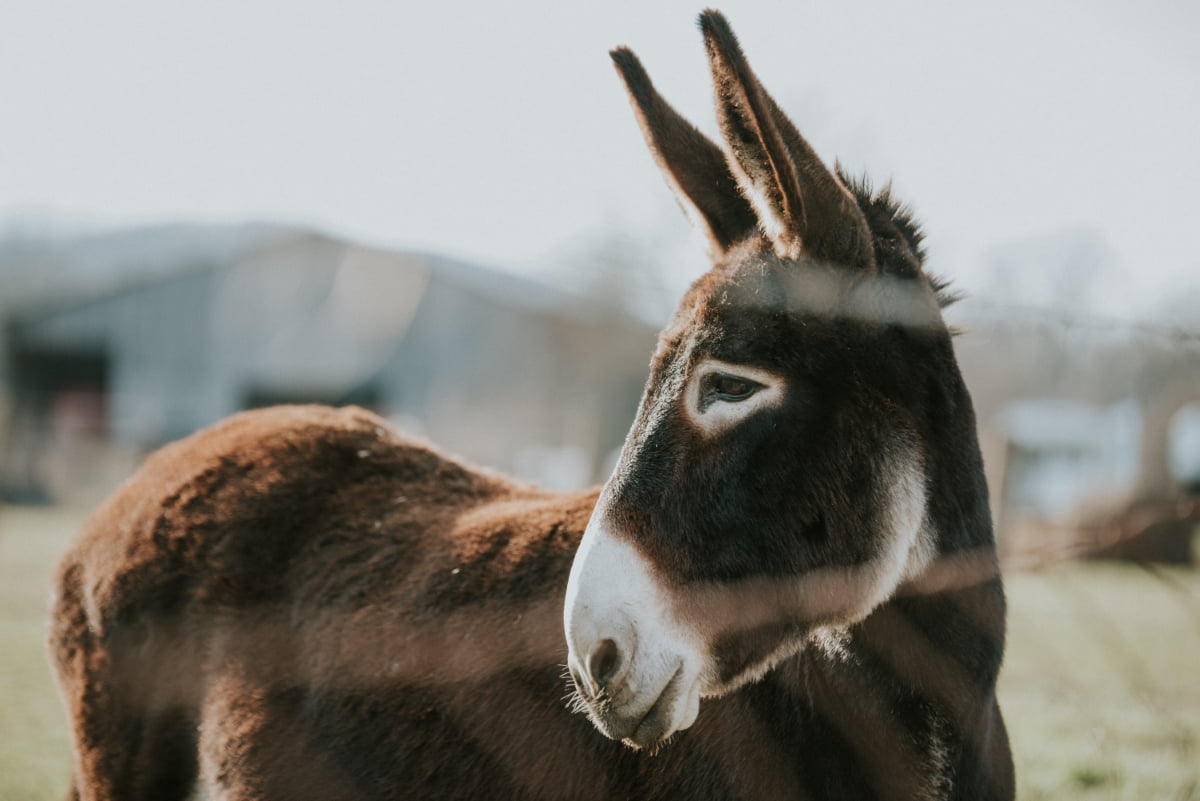Raising American Mammoth Jackstock is a rewarding endeavor for many reasons. These majestic creatures have a rich history in the United States and play an essential role in various industries. Their gentle disposition and intelligence also make them wonderful companions and therapy animals, bringing joy and comfort to those around them.

Overview of American Mammoth Jackstock
History and Origin of the Breed
The American Mammoth Jackstock breed has a rich history originating in North America, tracing back to the late 18th century. These impressive animals were bred from large donkeys imported to the United States around 1785. These majestic creatures have been an integral part of American agriculture for centuries.
Distinctive Characteristics and Physical Features
The American Mammoth Jackstock is known for its impressive size and strength. These majestic creatures stand tall, with males reaching a minimum height of 58 inches at the withers and females standing at least 56 inches. The weight of these magnificent animals can range between 900 to 1200 pounds, showcasing their robust build and powerful stature. One of the most distinctive characteristics of the American Mammoth Jackstock is its long ears, which can measure up to one-third of the length of its body.
Lifespan
The lifespan of the American Mammoth Jackstock is a significant factor to consider for potential owners. These majestic creatures have impressive longevity, living anywhere from 30 to 40 years on average.
Breed Standards and Classification
Defining the American Mammoth Jackstock Standards
The American Mammoth Jackstock breed standards are a key aspect of understanding the unique characteristics and qualities that define these majestic animals. In terms of classification, the American Mammoth Jackstock is recognized for its exceptional conformation, including straight legs, strong hooves, and a powerful overall physique.
Variations Within the Breed
American Mammoth Jackstock, despite sharing common characteristics, exhibits variations within the breed that make each unique. From coat color to temperament, these differences add depth and diversity to the breed. In terms of size, there can be slight variations in height and weight among American Mammoth Jackstocks. Understanding these variations can help owners better tailor their care and training methods to suit the individual needs of each Mammoth Jack.
Habitat and Living Conditions
Ideal Environmental Conditions for American Mammoth Jackstock
These majestic animals thrive in spacious areas with ample room to roam and graze freely. American Mammoth Jackstock also requires access to fresh water at all times, so a reliable water source is crucial. Providing good quality hay and feed is important for their nutritional needs, along with suitable mineral supplements. Creating a comfortable and safe environment for your American Mammoth Jackstock will help them thrive and lead happy, healthy lives on your farm or property.
Housing and Shelter Needs
These majestic creatures require a shelter that offers protection from rain, wind, and extreme temperatures. A sturdy barn or three-sided shed works well to keep them comfortable. Ensure the shelter has good ventilation to prevent respiratory issues. Bedding with straw or shavings can provide a soft resting area for your mammoth donkeys.
Feeding and Nutrition
Essential Nutritional Requirements
When it comes to the nutrition of American Mammoth Jackstock, it’s essential to provide a balanced diet that meets their specific requirements. These gentle giants require high-quality hay or pasture forage as the foundation of their diet, along with access to clean water at all times.
Recommended Diet and Supplements
In addition to forage, consider supplementing their diet with a commercial feed designed for donkeys to ensure they receive adequate vitamins and minerals. Avoid overfeeding grains or treats, as this can lead to obesity and other health issues. Remember that proper nutrition plays a main role in the overall longevity of your American Mammoth Jackstock.
In case you missed it: How to Start Donkey Farming in 10 Steps: Business Plan, Management, and Care

Health and Wellness
Common Health Issues and Preventative Measures
Maintaining the health of your American Mammoth Jackstock is crucial for their well-being. Like any animal, they can be affected by common health problems that owners should be aware of. Regular veterinary care and vaccinations are vital in preventing potential illnesses and ensuring a long, healthy life for your beloved Mammoth Jacks.
Routine Veterinary Care and Vaccinations
Ensuring proper nutrition, adequate exercise and a clean-living environment are key factors in promoting good health among these majestic creatures. Routine check-ups with a knowledgeable veterinarian can help catch any potential problems early on. Vaccinations play a major role in protecting your Mammoth Jacks from diseases prevalent among equines.
Breeding and Reproduction
Understanding the Breeding Process
Breeding American Mammoth Jackstock is a meticulous process that requires careful planning and consideration. Understanding the breeding dynamics of this majestic breed is essential for successful reproduction. The gestation period for jennets typically lasts around 12 months before giving foal birth. Proper management of pregnant jennets involves providing adequate nutrition, regular veterinary check-ups, and ensuring a stress-free environment.
Management of Pregnant Jennets and Foal Care
Pregnancy in jennets is a crucial time requiring special care and attention. Ensuring proper nutrition, regular vet check-ups, and a stress-free environment are key during this period. Jennets should have access to clean water and high-quality forage. Regular veterinary visits for vaccinations, deworming, hoof trimming, and dental care are vital for maintaining optimal health in both jennets and their offspring.
Training and Handling
Basic Training Techniques for Young Jackstock
Training and handling young American Mammoth Jackstock is crucial for their development. Start with basic obedience commands like “walk,” “halt,” and “back up.” Use positive reinforcement methods such as treats to encourage good behavior. Consistency is key in training these intelligent animals.
Handling and Socialization Tips
When handling your Jackstock, establish trust by spending time together regularly. Grooming sessions can help build a bond and desensitize them to touch. Socialization with other animals and exposure to different types of environments will help them adapt well. Remember that each animal has its own pace of learning, so be understanding of their progress. Handling young Jackstock requires patience, dedication, and a deep understanding of their needs.
Uses and Applications
Role in Agriculture and Farm Work
American Mammoth Jackstocks are versatile animals that play essential roles in various aspects of life. In agriculture and farm work, these majestic creatures excel in tasks such as plowing fields, pulling carts, and carrying heavy loads with their impressive strength and endurance.
Recreational and Therapeutic Uses
Many people enjoy spending time with these intelligent animals for leisure activities like trail riding or participating in donkey shows. Additionally, their calm demeanor and affectionate personalities make them excellent candidates for therapy programs where they provide emotional support to individuals in need. Whether it’s helping out on the farm or bringing joy to those seeking relaxation or healing, American Mammoth Jackstock truly shines in a variety of roles across different settings.
In case you missed it: Frequently Asked Questions About Donkey Farming

Conservation and Preservation Efforts
Status of the Breed and Conservation Challenges
Conservation and Preservation Efforts for the American Mammoth Jackstock are crucial to ensure the longevity of this historic breed. As these majestic donkeys face various challenges, such as genetic diversity loss and habitat destruction, dedicated efforts are essential to safeguard their future. Preserving the unique characteristics of the American Mammoth Jackstock is paramount in securing its heritage for generations to come.
Organizations and Efforts to Preserve American Mammoth Jackstock
American Mammoth Jackstock enthusiasts are passionate about preserving this historic breed, leading to the formation of various organizations dedicated to their conservation. Through educational programs, breeding initiatives, and advocacy efforts, they strive to safeguard the genetic diversity and cultural significance of American Mammoth Jackstock. They also collaborate with veterinary experts to address health concerns specific to the breed and establish best practices for care.
Getting Started with American Mammoth Jackstock
Choosing the Right American Mammoth Jackstock
Research breeders and farms are known for their quality stock. Look for reputable sources that prioritize health and breed standards. Evaluate your goals for owning a Mammoth Jackstock. Consider the temperament of the individual animals. Check for any signs of illness or conformational issues that could affect their well-being later on. A healthy start leads to a happy partnership between owner and donkey.
Resources and Support for Owners and Breeders
From online forums to local breed clubs, there is a wealth of knowledge available at your fingertips. Connecting with experienced owners can provide valuable insights and guidance on breeding, care, and training techniques. It’s important to have access to reliable sources of information when it comes to the unique needs of Mammoth Jacks. Online publications dedicated to donkey breeds often feature articles on best practices for raising American Mammoth Jackstock. These resources can serve as a handy reference guide for both novice and seasoned breeders alike.
In case you missed it: Donkey Breeding Cost and Profit: Production Economics and Project Report

Conclusion
Raising Mammoth Jack Donkeys can be a rewarding experience for those looking to add these majestic animals to their farm or family. Providing proper care and attention is essential in ensuring the well-being of your donkey.
Note: The images presented in this post are intended solely for representation purposes. The images are meant to serve as visual aids and should not be relied upon as accurate representations of their real-life counterparts.
- Feed Your Flock for Less: Top 10 Tips to Save on Chicken Feed
- Ultimate Guide to Ossabaw Island Hog: Breeding, Raising, Diet, and Care
- Hatching Answers: The Top 10 Reasons Your Chickens Aren’t Laying Eggs
- Eggs and Economics: Breaking Down the Cost of Raising Backyard Chickens
- Defend Your Greens: Proven Methods to Keep Iguanas Out of Your Garden
- Ultimate Guide to Cinnamon Queen Chicken: A Comprehensive Guide for Beginners
- Ultimate Guide to California Tan Chicken: Breeding, Raising, Diet, Egg-Production and Care
- Ultimate Guide to Marsh Daisy Chicken: Breeding, Raising, Diet, and Care
- 10 Types of Chicken Farming Businesses You Can Start for Profits